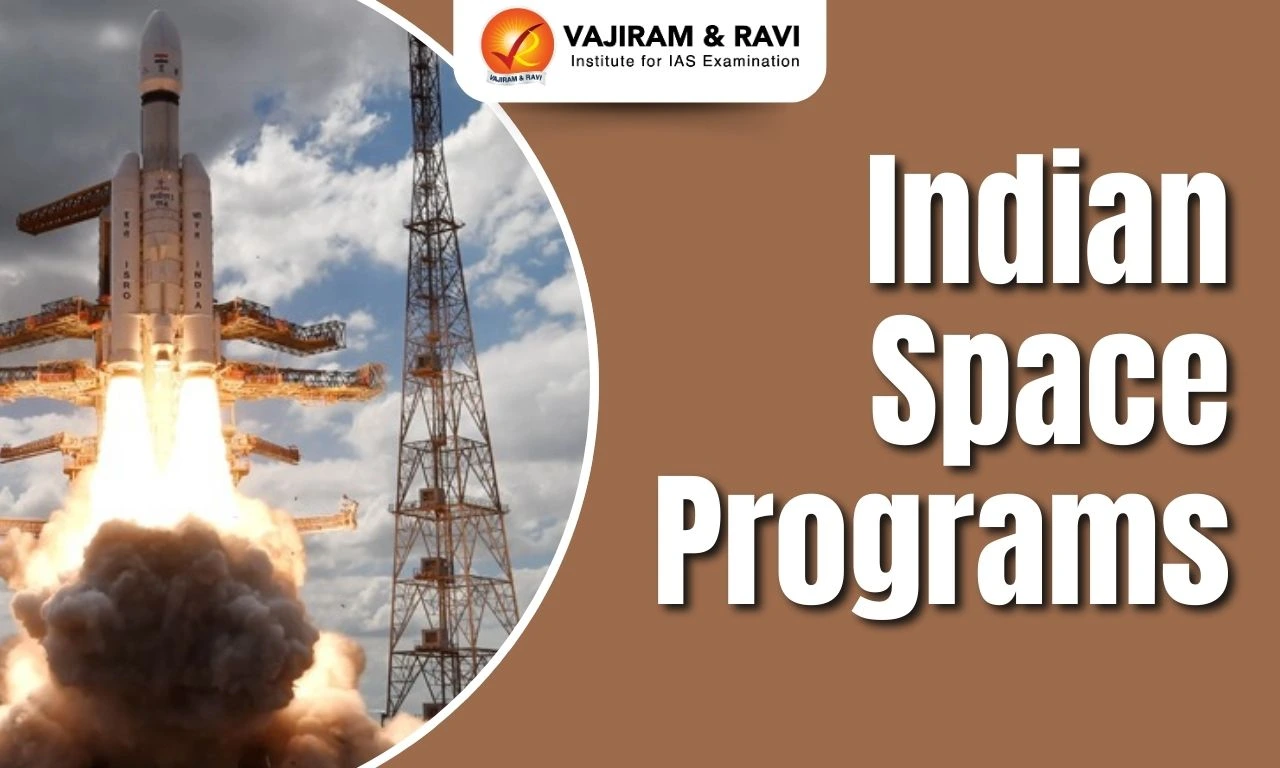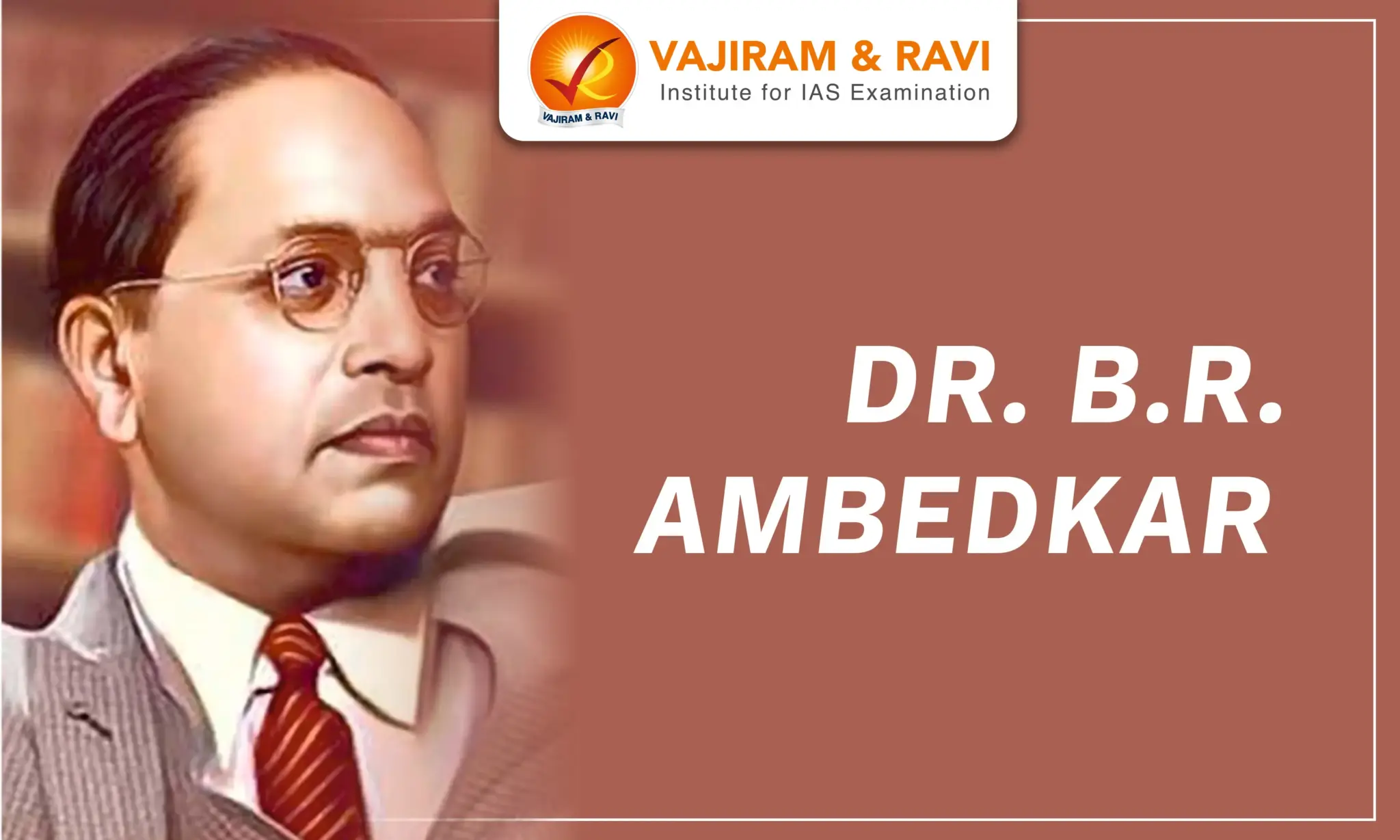India has one of the world's most active space programmes, with a diverse set of missions and accomplishments in the space sector. The Indian Space Research Organisation (ISRO) is India's primary space agency. It has made significant contributions in areas such as satellite launch technology, remote sensing, and space exploration, from launching its very first satellite in 1975 to embarking on interplanetary missions such as Mangalyaan to Mars and Chandrayaan to the Moon.
Experimental Satellites
ISRO has launched a number of small satellites, primarily for research purposes. These experiment satellites include Remote Sensing, Atmospheric Studies, Payload Development, Orbit control, Recovery technology, etc.
| Satellite | Launch Year | Launch Vehicle | Specification |
| Aryabhata | 1975 | C-1 Intercosmos |
- India's first satellite - Completely designed and manufactured in India. |
|
Rohini Satellite RS-1 |
1980 | SLV-3E2 | - An experimental spin-stabilised satellite with a power handling capability of 16 W. |
| APPLE | 1981 | Ariane -1(V-3) | - First indigenous experimental communication satellite launched into the GTO. |
| YOUTHSAT | 2011 | PSLV-C16/RESOURCESAT-2 | - Indo-Russian stellar and atmospheric satellite mission with the participation of students. |
| INS-1A & INS-1B | 2017 |
PSLV-C37 / Cartosat -2 Series Satellite |
- Mini satellites launched into Sun Synchronous Polar Orbit |
| INS-1C | 2018 | PSLV-C40/Cartosat-2 Series Satellite Mission | - Mini satellite |
| INS-2TD | 2022 |
PSLV-C52/ EOS-04 Mission |
- Technology demonstrator satellite |
Communication Satellites
Communication satellites are man-made satellites that provide communication links between various locations on Earth. Communication satellites are critical components of the global communications system. Most communications satellites consist of Solar cells and batteries, antennas, transponders and orientation and propulsion systems.
- ISRO has launched various communication satellites with INSAT and GSAT satellites being the important ones.
- Indian National Satellite (INSAT) system:
- With 9 operational communication satellites in Geo-stationary orbit, the INSAT system is one of the largest domestic communication satellite systems in the Asia-Pacific region.
- Applications: With over 200 transponders in the C, Extended C, and Ku bands, the INSAT system supports telecommunications, television broadcasting, satellite newsgathering, societal applications, weather forecasting, disaster warning, and search and rescue operations.
- GSAT Satellites:
- Later in the 2000s, ISRO started developing GSAT satellites to augment the capacity of the INSAT system and to provide new telecommunications services, such as broadband internet and mobile telephony.
- While INSAT satellites are multipurpose satellites, GSAT satellites, on the other hand, are primarily dedicated to telecommunications services.
- Both INSAT and GSAT satellites are placed in the Geosynchronous Orbit.
| Satellite | Year | Launch Vehicle | Specification |
| Indian National Satellite System (INSAT)-1B | 1983 | Delta | - First successful satellite of the INSAT series for communication, broadcasting and meteorology. |
| INSAT-2A | 1992 | Ariane-44L H10 | - First Multipurpose satellite built by ISRO |
| GSAT-1 | 2001 |
GSLV-D1 / GSAT-1 |
- First satellite under the GSAT series - To conduct communication experiments such as digital audio broadcast, internet services, and compressed digital TV transmission. |
| KALPANA-1 | 2002 | PSLV-C4 /KALPANA-1 | - First in the series of exclusive meteorological satellites built by ISRO. |
| EDUSAT | 2004 | GSLV-F01 / EDUSAT(GSAT-3) | - First dedicated educational satellite for distance classroom education from school level to higher education. |
| HAMSAT | 2005 |
PSLV-C6/CARTOSAT-1 /HAMSAT |
- Micro-satellite for providing satellite-based Amateur Radio services |
| GSAT-8 | 2011 | Ariane-5 VA-202 | - Communication and navigation satellite inducted in the INSAT system. |
| GSAT-10 | 2011 |
PSLV-C17/ GSAT-12 |
- For communication services like Tele-education, Telemedicine and for Village Resource Centres. |
| GSAT-19 | 2017 |
GSLV Mk III-D1/ GSAT-19 Mission |
- First in GSAT series to be launched by GSLV Mk-III - It carried Ka/Ku-band high throughput communication transponders. |
| GSAT-11 | 2018 | Ariane-5 VA-246 |
- Heaviest satellite built by ISRO. - Communication satellite with multi-spot beam antenna coverage over the Indian mainland and Islands. |
| GSAT-7A | 2018 |
GSLV-F11 / GSAT-7A Mission |
- Geostationary satellite carrying communication transponders in Ku-band. |
| GSAT-30 | 2020 | Ariane-5 VA-251 |
- Built on ISRO's improved I-3K Bus structure to provide communication services from geostationary orbit in the C and Ku bands. - Replaced INSAT-4A |
| CMS-01 | 2020 | PSLV-C50/CMS-01 | - For communications services in the Extended-C Band of the frequency spectrum. |
Earth Observation Satellites
Earth observation satellites are satellites that observe various Earth phenomena from space.
- ISRO has launched numerous operational remote sensing satellites since IRS-1A in 1988. India now operates one of the largest constellations of remote-sensing satellites.
- Applications: Agriculture, water resources, urban planning, rural development, mineral prospecting, the environment, forestry, ocean resources, and disaster management.
| Satellite | Launch Date | Launch Vehicle | Specification |
| Bhaskara-I | 1979 | C-1 Intercosmos |
- India's first experimental remote sensing satellite for earth observations - Launched in Geosynchronous Orbit |
| Rohini Satellite RS-D1 | 1981 | SLV-3D1 | - Launched in Low earth orbit and partially successful. |
| IRS-1A | 1988 | Vostok |
- First in a series of indigenous cutting-edge remote sensing satellites. - Launched in Sun Synchronous Polar Orbit. |
| Oceansat (IRS-P4) | 1999 | PSLV-C2/IRS-P4 |
- First satellite primarily built for Ocean applications - Launched in Polar Sun Synchronous orbit |
|
The Technology Experiment Satellite (TES) |
2001 | PSLV-C3 / TES | - Experimental satellite to demonstrate and validate the technologies such as attitude and orbit control system. |
|
IRS-P6 / RESOURCESAT-1 |
2003 |
PSLV-C5 / RESOURCESAT-1 |
- 10th satellite of ISRO in IRS series to enhance data quality. |
| CARTOSAT-1 | 2005 |
PSLV-C6/ CARTOSAT-1/HAMSAT |
- The first IRS Satellite capable of providing in-orbit stereo images. |
| RISAT-2 | 2009 |
PSLV-C12 / RISAT-2 |
- Radar Imaging Satellite capable of taking images of the Earth in all weather conditions. |
| Megha-Tropiques | 2011 |
PSLV-C18/ Megha-Tropiques |
- Joint Indo-French Satellite Mission to study the water cycle and energy exchanges in the tropics. |
| RISAT-1 | 2012 | PSLV-C19/RISAT-1 |
- A microwave remote sensing Satellite carrying a Synthetic Aperture Radar Payload operating in C-band - Surface imaging during the day and at night in all weather conditions. |
| SARAL | 2013 | PSLV-C20/SARAL | - A joint Indo-French satellite mission to study oceanography |
| SCATSAT-1 | 2016 |
PSLV-C35 / SCATSAT-1 |
- A continuity mission for Oceansat-2 |
| HysIS | 2018 |
PSLV-C43 / HysIS Mission |
- Earth observation satellite built around ISRO’s Mini Satellite-2 to study the earth’s surface in the visible, near-infrared and shortwave infrared regions of the electromagnetic spectrum. |
| EOS-01 | 2020 |
PSLV-C49/ EOS-01 |
- For applications in agriculture, forestry and disaster management support. |
| EOS-04 | 2022 |
PSLV-C52/ EOS-04 |
- Radar Imaging Satellite designed for high-quality images under all weather conditions in fields such as Agriculture. |
Navigation Satellites
Satellite navigation service is a new satellite-based system with commercial and strategic applications. ISRO has developed and launched a series of navigation satellites to establish and enhance India's regional navigation capabilities. Navigation satellites are important for civil aviation requirements, navigation and time-based positioning.
GPS-Aided GEO Augmented Navigation (GAGAN)
- It is a satellite-based augmentation system (SBAS) jointly developed by ISRO and the Airport Authority of India (AAI).
- Objectives: Providing accurate satellite-based navigation services for civil aviation applications and improving air traffic management over Indian airspace.
- The system will be compatible with other international SBAS systems and will allow for seamless navigation across regional borders.
- GSAT-8 and GSAT-10 provide access to the GAGAN Signal-In-Space (SIS).
Indian Regional Navigation Satellite System (IRNSS): NavIC
- It is an independent regional navigation satellite system developed by ISRO.
- NavIC was erstwhile known as the Indian Regional Navigation Satellite System (IRNSS)
- It is intended to provide accurate position, navigation and timing services to users in India and regions extending up to 1500 kilometres from its boundary.
- It provides Standard Positioning Service (SPS) for all users and Restricted Service (RS) for authorised users.
Small Satellites
The small satellite project aims to provide a platform for stand-alone payloads for earth imaging and science missions in a short period of time.
- Two types of buses Indian Mini Satellite -1 (IMS-1) and Indian Mini Satellite -2 (IMS-2) have been configured and developed to create a versatile platform for various payloads.
- Payload capability: IMS-1 bus -nearly 30 kg, while IMS-2 bus - nearly 100 kg.
| Satellite | Launch Date | Launch Vehicle | Specification |
| YOUTHSAT | 2011 |
PSLV-C16/ RESOURCESAT-2 |
- Joint Indo-Russian satellite mission with student participation. - Its goal is to look into the relationship between solar variability and changes in the thermosphere and ionosphere. |
| Microsat | 2018 |
PSLV-C40/Cartosat-2 Series Satellite Mission |
- A technology demonstrator satellite in a 100 kg class similar to the IMS-1 bus. |
Space Explorations of ISRO
ISRO has made significant strides in space science and exploration missions, conducting missions that have expanded our understanding of astronomy, astrophysics, celestial bodies and space.
| AstroSat |
- It is ISRO's first dedicated astronomy mission - It aims to study celestial sources in X-ray, optical, and UV spectral bands at the same time. - It enables the simultaneous observation of multiple astronomical objects at multiple wavelengths using a single satellite. - It was launched by ISRO in September 2015 by PSLV-C30 from Satish Dhawan Space Centre, Sriharikota. |
| Mars Orbiter Mission (Mangalyaan) - (2013) |
- It was the first interplanetary mission of ISRO to the Mars. - Its mission is to investigate, explore, and observe Mars' surface features, mineralogy, and Martian atmosphere. - It was launched by PSLV-C25 in November 2013, making ISRO the fourth space agency to successfully launch a spacecraft into Mars orbit. - One of its uniqueness is the observation of the far side of Mars moon; Deimos, for the first time. |
| Chandrayaan 1 - (2008) |
- It was the first lunar exploration mission of ISRO, consisting of an orbiter. - Launch vehicle: PSLV C-11 of ISRO in October 2008.. - It aimed to study the Moon's surface, and mineral composition, and search for water molecules. - The mission made a significant discovery of water molecules on the Moon's surface. |
| Chandrayaan 2 - (2019) |
- It was the second lunar exploration mission of ISRO, consisting of an orbiter, a lander named Vikram and a rover named Pragyan. - Launch vehicle: GSLV MkIII-M1 of ISRO in July 2019.. - It aimed to explore and study the South Pole region of the Moon, including soft-landing and roving on the surface of the Moon. - While the Vikram lander's attempt to make a soft landing on the Moon was not successful, the orbiter continues to provide valuable data about the Moon from lunar orbit. |
| Chandrayaan 3 - (2023) |
- It is a follow-up mission to Chandrayaan-2, consisting of a propulsion module, a lander named Vikram and a rover named Pragyan. - Launch vehicle: Launch Vehicle Mark III (LVM3) of ISRO in July 2023.. - It was the second attempt of ISRO to demonstrate the capability of safe landing and roving on the lunar surface. -It made ISRO the first space agency to soft-land on the lunar surface's south pole, and the fourth to do so anywhere on the Earth's natural satellite. |
| Aditya L1 - (2023) |
- It is the first dedicated solar mission of ISRO that will study the Sun's atmosphere and corona. - Launch vehicle: PSLV-C57 of ISRO in September 2023.. - Placed at the L1 (Lagrange point) to maintain a constant, uninterrupted view of the Sun. |
Future Space Programmes of ISRO
According to ISRO, the following are the upcoming programmes:
| Gaganyaan |
- It plans to demonstrate human spaceflight capability by launching a three-person crew into a 400-kilometre orbit for a three-day mission and safely returning them to Earth by landing in Indian sea waters. - It will be launched by launch vehicle Human-rated LVM3 of ISRO, which will also include Crew Escape System (CES). - It will be the first manned mission of ISRO. |
| X-ray Polarimeter Satellite (XPoSat) |
- It is the first dedicated polarimetry mission of ISRO to study the dynamics of bright astronomical X-ray sources in extreme conditions. - It will carry two scientific payloads; POLIX and XSPECT in a low earth orbit. |
| NASA-ISRO SAR (NISAR) Satellite |
- It is an earth-observation satellite being developed jointly by NASA and ISRO. - It will map the earth in 12 days and provide spatially and temporally consistent data to help scientists understand changes in the Earth's ecosystems. - It is equipped with L and S dual band Synthetic Aperture Radar (SAR) that uses the Sweep SAR technique to achieve vast areas of high-resolution data. - NASA is in charge of providing the L-Band SAR payload system, while ISRO is in charge of the S-Band SAR payload, and both SAR systems will use a large size common unfurlable reflector antenna. |
| SPADEX (Space Docking Experiment) |
- It is a twin spacecraft mission of ISRO to demonstrate autonomous docking. - It will develop and demonstrate the technologies required to dock two spacecraft and control one spacecraft from the Attitude Control System of the other spacecraft while docked. |
Last updated on November, 2025
→ Check out the latest UPSC Syllabus 2026 here.
→ Join Vajiram & Ravi’s Interview Guidance Programme for expert help to crack your final UPSC stage.
→ UPSC Mains Result 2025 is now out.
→ UPSC Notification 2026 is scheduled to be released on January 14, 2026.
→ UPSC Calendar 2026 is released on 15th May, 2025.
→ The UPSC Vacancy 2025 were released 1129, out of which 979 were for UPSC CSE and remaining 150 are for UPSC IFoS.
→ UPSC Prelims 2026 will be conducted on 24th May, 2026 & UPSC Mains 2026 will be conducted on 21st August 2026.
→ The UPSC Selection Process is of 3 stages-Prelims, Mains and Interview.
→ UPSC Result 2024 is released with latest UPSC Marksheet 2024. Check Now!
→ UPSC Prelims Result 2025 is out now for the CSE held on 25 May 2025.
→ UPSC Toppers List 2024 is released now. Shakti Dubey is UPSC AIR 1 2024 Topper.
→ UPSC Prelims Question Paper 2025 and Unofficial Prelims Answer Key 2025 are available now.
→ UPSC Mains Question Paper 2025 is out for Essay, GS 1, 2, 3 & GS 4.
→ UPSC Mains Indian Language Question Paper 2025 is now out.
→ UPSC Mains Optional Question Paper 2025 is now out.
→ Also check Best IAS Coaching in Delhi
Indian Space Programs FAQs
Q1. Who is responsible for India’s Space Programs?+
Q2. When was India's first satellite launched?+
Q3. What are the communication satellites launched by ISRO?+
Q4. What is the navigation satellite system of ISRO?+
Q5. What are some upcoming space programmes of ISRO?What are some upcoming space programmes of ISRO?+
Tags: indian space programs quest




















